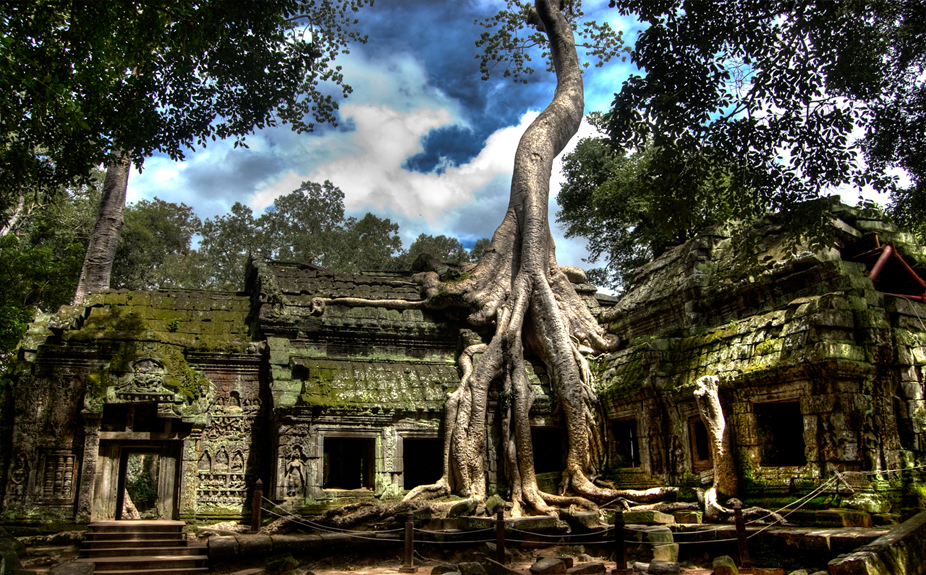Ta Prohm Temple
 Ta Prohm is the modern name of a temple at Angkor Wat was built during the reign of Jayavarman VII, a great king who re-conquered the Khmer empire from Cham invaders in the years 1177-1181 in the Bayon style and originally called Rajavihara.Located approximately one kilometer east of Angkor Thom and on the southern edge of the East Baray, it was founded by the Khmer King Jayavarman VII as a Mahayana Buddhist monastery and university. The sanctuary is centered on the huge elevated stone face of Prajnaparamita, the personification of wisdom, whose features were modeled after those of the king's mother.
Ta Prohm is the modern name of a temple at Angkor Wat was built during the reign of Jayavarman VII, a great king who re-conquered the Khmer empire from Cham invaders in the years 1177-1181 in the Bayon style and originally called Rajavihara.Located approximately one kilometer east of Angkor Thom and on the southern edge of the East Baray, it was founded by the Khmer King Jayavarman VII as a Mahayana Buddhist monastery and university. The sanctuary is centered on the huge elevated stone face of Prajnaparamita, the personification of wisdom, whose features were modeled after those of the king's mother.
Built at the height of the Khmer Empire by Jayavarman VII as a Buddhist monastery and center of learning, Ta Prohm has a traditional Khmer structure consisting of a series of gradually smaller enclosures, the largest of which is about 1000 by 650 meters. Though the temple covers barely 2.5 acres, its walls and moat encompass 148 acres, which would have sheltered a town attached to the temple. Here, 12,640 people lived, supported by a population of 79,365 who worked in nearby villages to provide food and supplies.
Unlike most Angkorian temples, Ta Prohm has been left in much the same condition in which it was found: the
photogenic and atmospheric combination of trees growing out of the ruins and the jungle surroundings have made it one of Angkor’s most popular temples with visitors.
The temple of Ta Prohm was used as a location in the film Tomb Raider. Although the film took visual liberties with other Angkorian temples, its scenes of Ta Prohm were quite faithful to the temple’s actual appearance, and made use of its eerie qualities.
When Angkor was rediscovered in the early 20th century by French archaeologists, all of the temples had become overgrown--but none so spectacularly as Ta Prohm. Nevertheless, as they excavated and restored the other temples, the archaeologists had to make sure that the giant tree roots enveloping Ta Prohm would not further deteriorate the structure or make it dangerous to visit. Though Ta Prohm may look like nature unfettered, the appearance of neglect is in fact fastidiously maintained.